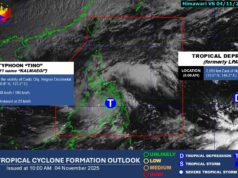Balance of payments deficit persists, though narrower, in February
By Melissa Luz T. Lopez
Senior Reporter
THE COUNTRY’s external payments position remained in deficit in February with outflows driven by debt payments and central bank intervention in the foreign exchange market, but is deemed still comfortable for now.
Philippine balance of payments (BoP) settled at a $429-million deficit last month, albeit narrower than the $531-million gap posted in January and the $436- million deficit recorded in February 2016, the Bangko Sentral ng Pilipinas (BSP) said yesterday.
“Outflows in February 2018 stemmed mainly from foreign exchange operations of the BSP and payments made by the National Government for its maturing foreign exchange obligations,” the central bank said in a statement.
The BoP measures the country’s transactions with the rest of the world at a given time. A deficit means more funds fled the economy than what went in, while a surplus shows that more money entered the Philippines.
Inflows were recorded from net foreign currency deposits held by the government, as well as the steady stream of income from the BSP’s offshore investments. These are the same factors cited by the central bank as it reported smaller but still healthy $80.422 billion in dollar reserves, enough to cover 7.9 months’ worth of import duties and 5.6 times the country’s short-term foreign debt.
The latest figure brought the two-month BoP deficit to $961 million, nearly double the $445-million shortfall posted in 2017’s counterpart period. This compares to the $1-billion deficit expected by the BSP by end-2018 and the $863-million actual deficit posted last year.
“The higher cumulative BoP deficit for the first two months of the year may be attributed partly to the widening merchandise (trade) deficit in January 2018 as well as higher net outflows of foreign portfolio investments for the first two months of the year,” the BSP said.
The country’s trade deficit widened further in January to $3.317 billion with imports rising by double-digits amid flat exports growth, according to the Philippine Statistics Authority.
On the other hand, latest hot money data from the central bank bared net outflows in February, although the year-to-date tally still posted net inflows worth $795.16 million.
Analysts have flagged the widening deficit as affecting market sentiment towards the Philippines, as reflected in the weakness of the peso versus the dollar.
The BSP, however, has maintained that the deficit is typical of a growing economy amid increased public spending.
A number of private sector economists agree.
“The BoP deficit is not a cause for concern,” Ruben Carlo O. Asuncion, chief economist at the Union Bank of the Philippines, said when sought for comment.
“A deficit does not necessarily mean that the economy is in a bad situation… This means that the Philippines is investing more than it is saving and, consequently, it is using other resources from other economies to meet its domestic consumption and investment demand,” he explained.
“One will see that the ‘Build, Build, Build’ program of the Duterte government is one of the main reasons why the BoP deficit is closer to the BSP target for the year.”
At the same time, the analyst said the $1-billion deficit target set for 2018 “is no longer appropriate” and would have to be adjusted to reflect new assumptions amid faster economic growth.
The current administration plans to spend P1.1 trillion on public infrastructure this year, with hopes that the increased activity will fuel 7-8% economic growth for 2018 from 2017’s 6.7%.



